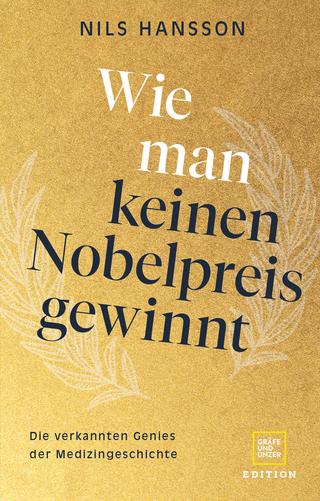
The Binocular Ophthalmoscope
The Choir Press (Verlag)
978-1-78963-162-3 (ISBN)
- Titel ist leider vergriffen;
keine Neuauflage - Artikel merken
The Binocular Ophthalmoscope is a chronological history of an instrument used by ophthalmologists and optometrists to examine binocularly the fundus, or back of the eye, of humans and animals. Following the invention of the ophthalmoscope in 1851 by Herman von Helmholtz there was a desire by some ophthalmologists to have a binocular form of this instrument. This was achieved in 1861 by the French ophthalmologist Marc Felix Giraud-Teulon.
The instrument was difficult to use and very few were produced. At the turn of the 20th century table-mounted instruments made by Carl Zeiss Jena were introduced. The designer was Allvar Gullstrand, a Nobel Prize laureate, who incorporated a new feature of reflex-free optics. The instruments were big and expensive.
Nearly 100 years after Giraud-Teulon's invention of the binocular ophthalmoscope another invention took place that transformed the examination of the eye binocularly. Charles Schepens, a young Belgian ophthalmologist, had the brilliant idea of combining the illumination with the binocular viewing box and attaching this to a headband. The outcome was the first head-worn binocular ophthalmoscope. Not only was the instrument used for the diagnosis of retinal conditions but it could be used during retinal surgery.
Keeler Ltd, the company that both authors worked for during their business careers, produced their version in 1959 and subsequently became world leaders for this instrument. They still hold this position after 60 years.
The book explores the many variations of the binocular ophthalmoscope, some bizarre, some successful but most less so.
Richard Keeler joined the Keeler Ltd family business in 1959, studied optics and became a dispensing optician but never practiced. He became part of the ophthalmic instruments division and spent the rest of his business career involved in all aspects of this subject. On his father's retirement in 1970 he took over as Managing Director and finally Chairman of Keeler Holdings Ltd He was involved in the development of a number of instruments including later models of the Keeler binocular ophthalmoscope, the first ophthalmic operating microscopes, the Pulsair tonometer, ophthalmic cryosurgery and lasers. In 1997 he retired a year after the takeover of the Keeler business by the Halma Group. Shortly afterwards he was invited to become Honorary Curator at the (Royal) College of Ophthalmologists in London having already been made an Honorary Fellow in 1993. This was the beginning of a second career in which he became immersed in the history of ophthalmology and ophthalmic instruments, publishing numerous journal articles and chapters in books on ophthalmology. Apart from being an Honorary Fellow of the Royal College of Ophthalmologists he is also an Honorary Fellow of the College of Optometrists and an Honorary Member of the Oxford Ophthalmological Congress. Clive Burrows joined the Keeler ophthalmic instrument company as a trainee dispensing optician in 1958 but most of his career over the next 50 years was spent in the development and marketing of ophthalmic instruments. He was one of the principals involved in the original specification of the highly successful Pulsair Non-Contact Tonometer and later the development and launch of the world's first ophthalmic laser diode photo-coagulator. However not all developments were of such exotic and ground-breaking devices.The company had a large portfolio of standard ophthalmic instruments, all of which required regular updating in order to retain their market leading status. These included the range of Binocular Indirect Ophthalmoscopes. Work often involved reviewing complex patents, setting up clinical trials of new prototype instruments and analysing the results. Clive Burrows continues his work as a member of the British Standards Institute on the Ophthalmic Optics Committee although he retired from Keelers in 2009 after serving 51 years with the company.
Acknowledgements. About the Authors. Richard Keeler FRCOphth (Hon). Clive Burrows xii. Introduction. Overview. Background. Lens power measurement: how the dioptre became the standard. Early Inventions. From Hand to Stand: Early 20th Century Binocular Ophthalmoscopes. Charles L Schepens: The Inventor Who Changed Binocular Ophthalmoscopy. Binocular Ophthalmoscopy becomes International. Spectacle-Mounted Binocular Ophthalmoscopes. Instruments Enabled by the Binocular Ophthalmoscope. Alternative Designs, Applications and Accessories. Summary. A Glimpse into the Future. Afterword. Notes.
| Erscheinungsdatum | 24.10.2022 |
|---|---|
| Zusatzinfo | Colour 78; b&w 146. Mono charts 19; Colour charts 2 |
| Verlagsort | Gloucester |
| Sprache | englisch |
| Maße | 203 x 254 mm |
| Gewicht | 400 g |
| Themenwelt | Medizin / Pharmazie ► Medizinische Fachgebiete ► Augenheilkunde |
| Studium ► Querschnittsbereiche ► Geschichte / Ethik der Medizin | |
| Naturwissenschaften | |
| ISBN-10 | 1-78963-162-9 / 1789631629 |
| ISBN-13 | 978-1-78963-162-3 / 9781789631623 |
| Zustand | Neuware |
| Haben Sie eine Frage zum Produkt? |
aus dem Bereich


